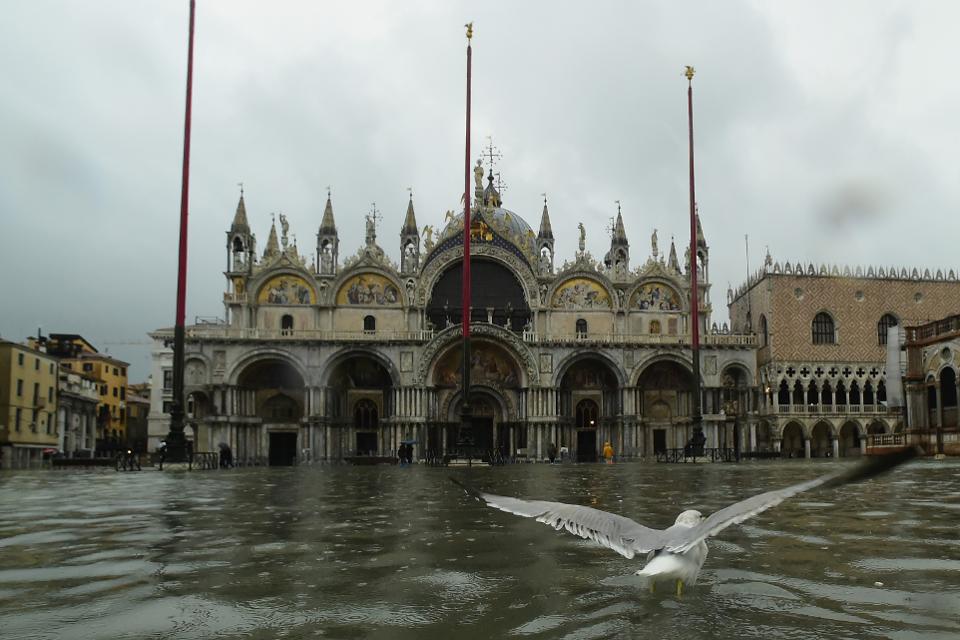The flooding in Venice this past week was extraordinary. According to my Forbes colleague Eric Mack, “On Tuesday, rains helped bring the seasonal high tides known as acqua alta to near record levels, just seven centimeters short of what was seen during the historic floods of 1966.” The mayor blamed climate change as did many other people around the world. That is when the hyperventilation started. As I listened to the mayor’s comments, two things came to mind. First, mayor Luigi Brugnaro knows more about his city and its flooding tendencies than any of us sitting thousands of miles away. Second, I wasn’t listening with a bias so understood the point he was making. A combination of high tides, rainfall, and even land mass subsidence (sinking) amplifies such events. However, sea level rise associated with climate change is in the mix too. Which brings me to the point of this article. I have noticed that some people make the mistake of framing climate change as an “either/or” proposition. It is not. It’s “and.” Let me explain.
VENICE, ITALY – NOVEMBER 15: A general view of piazza San Marco of Venice during the high tide on … [+]
When I first heard about the flooding, I immediately thought of one of my favorite songs by Duran Duran called Venice Drowning. However, a quick review of the lyrics does not suggest that lead singer Simon LeBon was singing about subsidence, tides, sea level rise, and rainfall. However, I certainly saw a chorus of Tweets and push back about the flooding in Venice. From my social media “sideline” I watched a strange science boxing match in which some people counterpunched at every turn with “Venice is sinking. Venice is sinking. Venice is sinking.” According to Reuters,
the city’s ground level has been gradually sinking, by an estimated one millimeter a year, owing to the soft and shifting geological terrain on which its foundations are built. That was made worse over decades by local industries around Venice pumping groundwater from the acquifer under the lagoon until they were forbidden to do so in the 1970s.
Yes, Venice is sinking and peer review studies using satellite-based techniques confirm the trends. In a 2016 feature in the American Geophysical Union publication Eos entitled, “Global Risks and Research Priorities for Coastal Subsidence,” the authors summarized a series of scientific workshops held in New Orleans, Louisiana and Venice, Italy. A key warning from the paper was that “many coastal areas are sinking even faster than the waters are rising: Natural and human-driven subsidence rates arising from shallow processes can be one to two orders of magnitude greater than the rate of climate-driven sea level rise predicted for the remainder of the 21st century.” As clearly as this finding was stated, the authors also stated within the same paper,
Coastal lowlands, which rise less than 10 meters above sea level, are particularly vulnerable to the climate change effects forecast for the 21st century, including the threat of inundation by accelerating sea level rise and increases in severity and frequency of tropical storm surges. These threats coincide with a worldwide surge in human population in coastal areas. Coastal population centers include several megacities, whose populations exceed 10 million. Many of these coastal megacities are located on river deltas that are also major centers for agriculture, fisheries, and hydrocarbon production.
The authors wrote a couple of very important words that demonstrated understanding that climate change impacts do not happen in isolation: “To make matters worse, many coastal areas are sinking even faster than the waters are rising.” The key lesson here is that these researchers framed the threat that Venice and other coastal regions face as being a tandem of effects: sinking, sea level rise, and more severe storm surges.
The “and” is so important. If I had a dollar for every comment that I hear about “climate changing naturally” or “hurricanes or floods always happening,” I could probably build a seawall. It is baffling to watch that narrative unfold because climate scientists are well-versed in the naturally-varying climate system and its associated processes. They are also well-versed in the notion that in the relatively short time that a new climate stimulus has been around (us), things are going to function differently. We wouldn’t expect a naturally-varying river to function the same way once development and farming activities have been established along its banks. We wouldn’t expect a river to flow the same way once a dam is placed near its headwaters. It stands to reason that we wouldn’t expect the climate system to function the same way when we are fundamentally altering the “river of air” (the atmosphere) by changing its radiative processes with excessive greenhouse gases emissions.
Science is rightfully a series of questions, examinations, results, and reexamination of the questions. However, I have also posed the following question in past writings. If someone is always “skeptical” in the same way, when does it become bias? I have no doubt in my mind that some of the people speaking about Venice sinking are simply adding to the body of information out there as climate change attribution is discussed. However, others want to mute or not acknowledge the climate change or sea level part of the story at all. That’s also disingenuous.

Venice as seen from space
